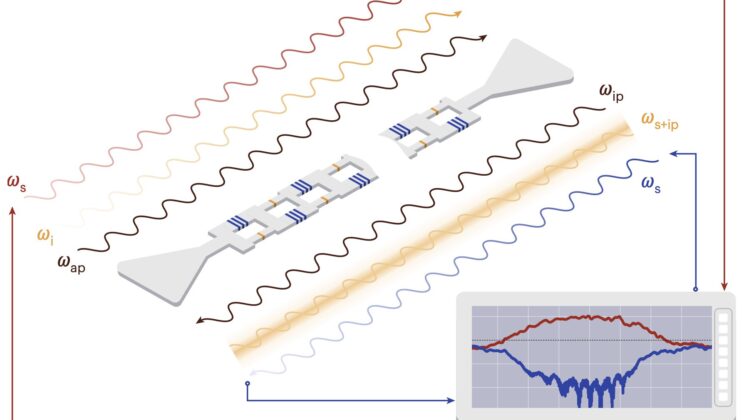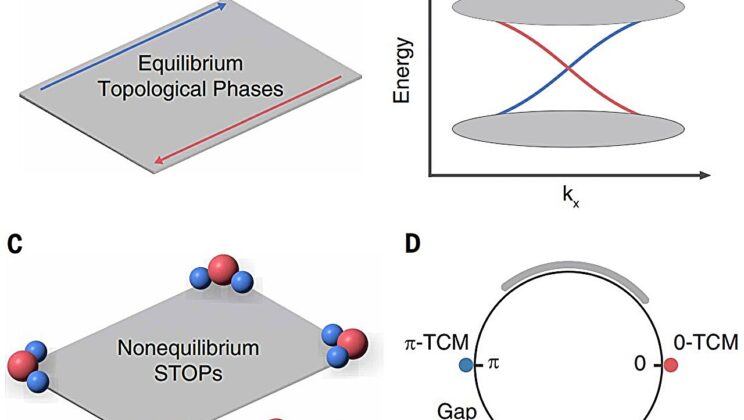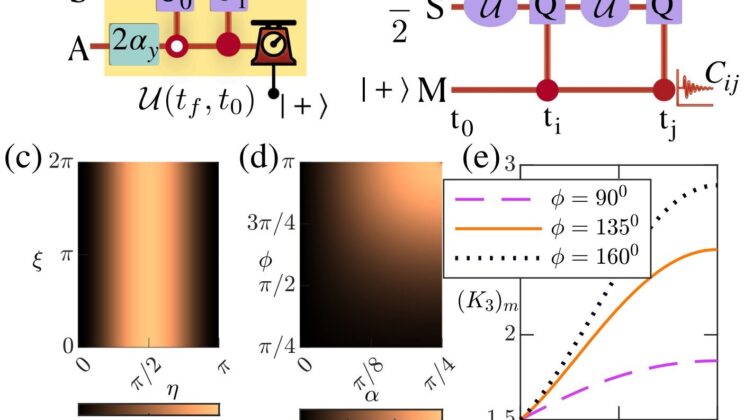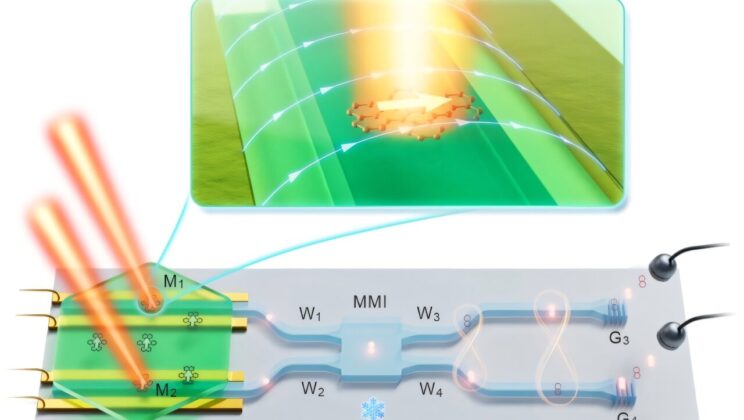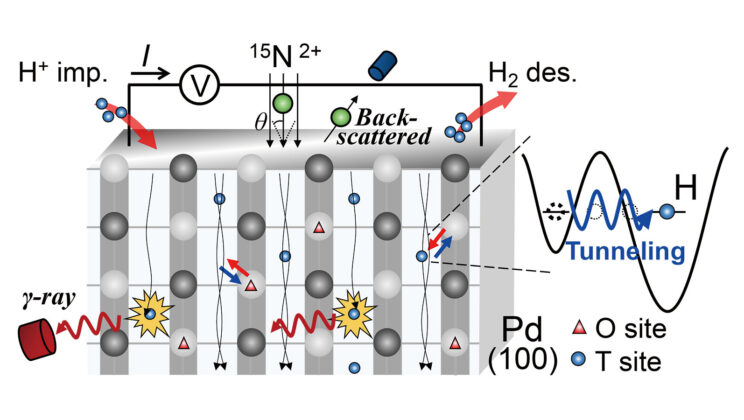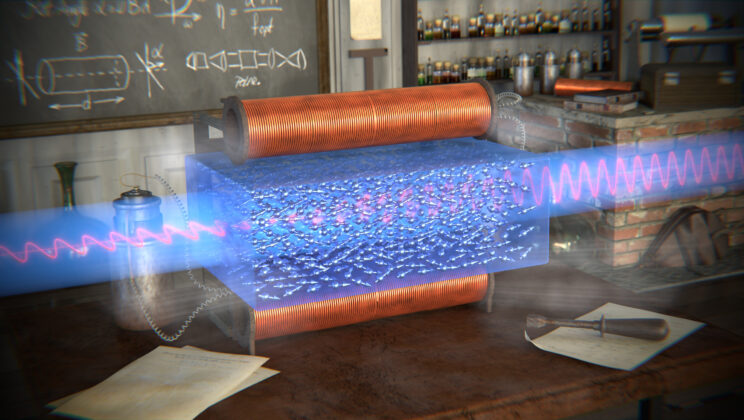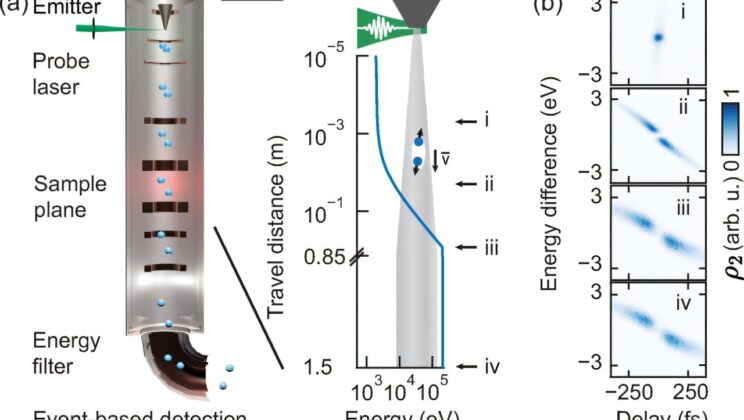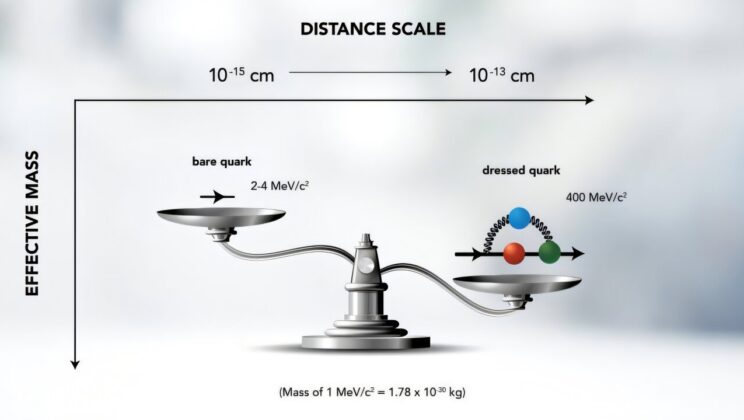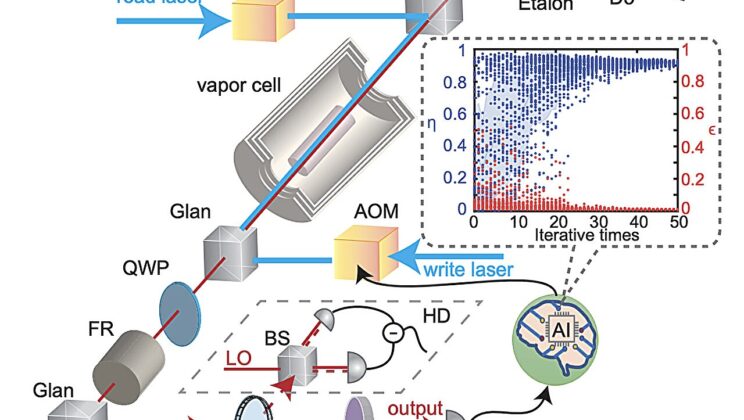Imagine a universe where heat no longer flows, where atoms quiver less and less until their restless dance finally halts.…
Category: Physics
Scientists Discover Ultra-Thin Crystal That Can Bend UV Light in Ways Never Seen Before
Light is usually a stubborn traveler. It bends when it must and speeds along when it can, but its behavior…
Scientists Build Superconducting Amplifier That Makes Backward Waves Disappear
In the world of microwave engineering, silence is sometimes more valuable than sound. Signals at the edge of detection, whisper-quiet…
Scientists Build a “Quantum Antenna” That Sees the Invisible Terahertz World for the First Time
For decades, the terahertz range of the electromagnetic spectrum has been a kind of scientific no-man’s land. It sits quietly…
Forget 1s and 0s: This New Light Tech Could Carry ‘Enormous’ Information Per Photon
The story begins with a simple but bold idea. What if light could be shaped so precisely in space and…
The Coldest Stars in Space May Be Exposing a Hidden Force of Nature
Neutron stars are some of the strangest objects in the universe, the ultra-dense remnants left behind after massive stars explode.…
Higgs Boson Sends New Signal at CERN and It’s Pointing Straight at the Muon
For more than a decade, the Higgs boson has stood at the center of one of physics’ greatest stories. First…
Scientists Unlock the Secret to Super-Stable Quantum Matter—And It’s Hiding in the Corners!
In a small but powerful laboratory hidden deep inside a quantum computer, a groundbreaking experiment was unfolding. It was not…
Scientists Discover a Quantum Gas That Defies the Laws of Resistance
In the quiet corridors of TU Wien, something astonishing has occurred. A team of scientists, working with a cloud of…
Scientists Uncover the Secret World of Magnetism with Diamond Sensors—Revealing the Invisible!
In the microscopic world, things move and interact in ways that are almost beyond comprehension. Electric currents skip and hop…
Quantum Physics Just Got Even Weirder—And It Could Revolutionize Technology
In the realm of quantum mechanics, reality is notoriously elusive. Imagine a world where particles can be in two places…
Is Consciousness the Secret to Understanding the Universe? A Radical New Theory Says Yes!
Maria Strømme, a professor of Materials Science at Uppsala University, has spent most of her career studying the building blocks…
New Quantum Chip Could Revolutionize Computing with ‘Indistinguishable’ Photons
Imagine a future where quantum computers don’t just exist in labs, but in the devices we use every day—our phones,…
What Happens If a Black Hole Passes Through Your Body? A Physicist Has the Answer
Imagine this: you’re walking down the street, minding your own business, when a primordial black hole—a cosmic remnant from the…
Scientists Uncover the Secret of Hydrogen’s Quantum Leap Through Metal Barriers
It’s a bit like watching a ghost pass through walls—an invisible entity slipping past barriers, seemingly defying the laws of…
Is the Muon Hiding a Secret? New Discovery Might Shake Up Physics
The journey of scientific discovery often follows a winding road, and sometimes, those who spend years chasing seemingly elusive truths…
The Secret to Scaling Quantum Computers Might Be Simpler Than You Think
Quantum computers are the next frontier in computational power. But what exactly makes them so special? Unlike classical computers, which…
Could the Speed of Light Actually Change? Scientists Test Einstein’s 115-Year-Old Theory
In 1887, a seemingly simple experiment would shape the entire future of physics. Two American scientists, Albert Michelson and Edward…
Scientists Discover Light’s Magnetic Field Does More Than Illuminate – It Magnetically Influences Matter!
Imagine for a moment that light—something we often think of as a simple tool for illumination—was more than just a…
Scientists Capture the Secret Dance of Electrons—What They Discovered Could Change Quantum Tech Forever!
Imagine being able to catch a glimpse of the fast-moving world of electrons as they travel through a microscope, not…
Scientists Uncover the Hidden Source of Nearly All Mass in the Universe — And It Isn’t the Higgs Boson
In the familiar world of matter, something has never quite added up. Protons and neutrons, the sturdy anchors of every…
Scientists Uncover the Hidden Math Trick Behind Near-Perfect Quantum Memory
For years, quantum physicists have chased a kind of stillness—a way to freeze fragile quantum information without disturbing it. The…


